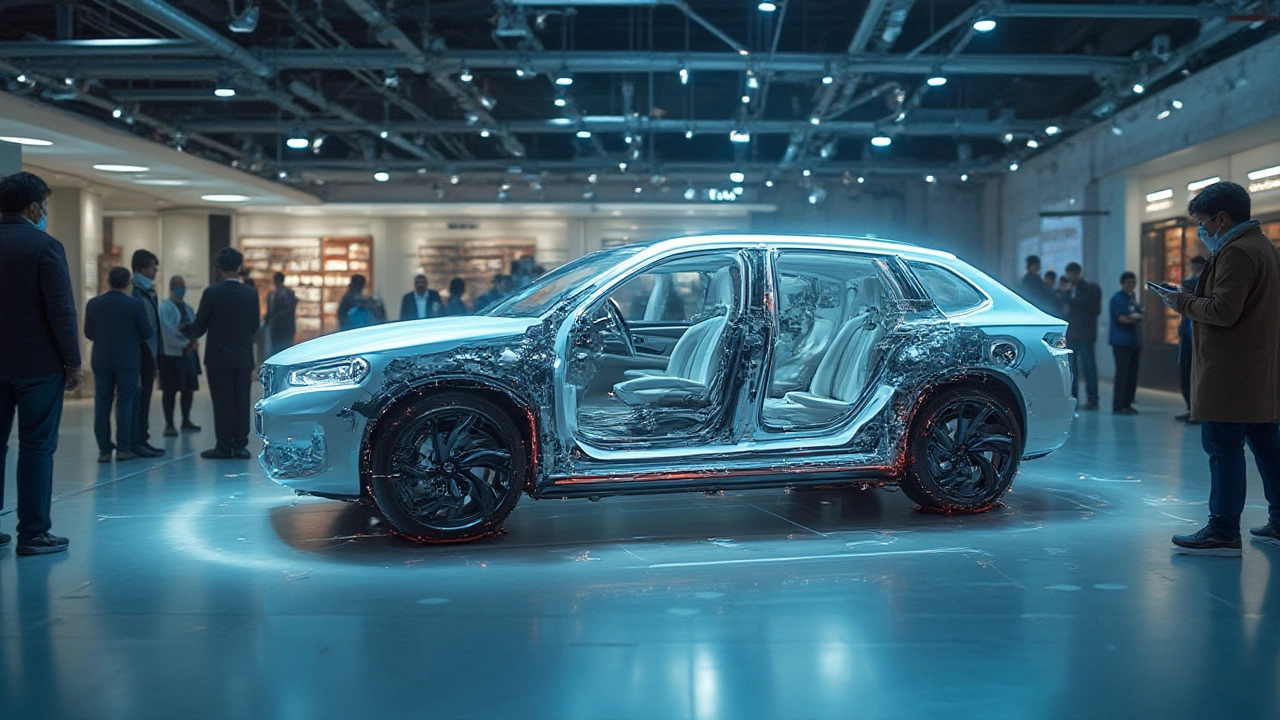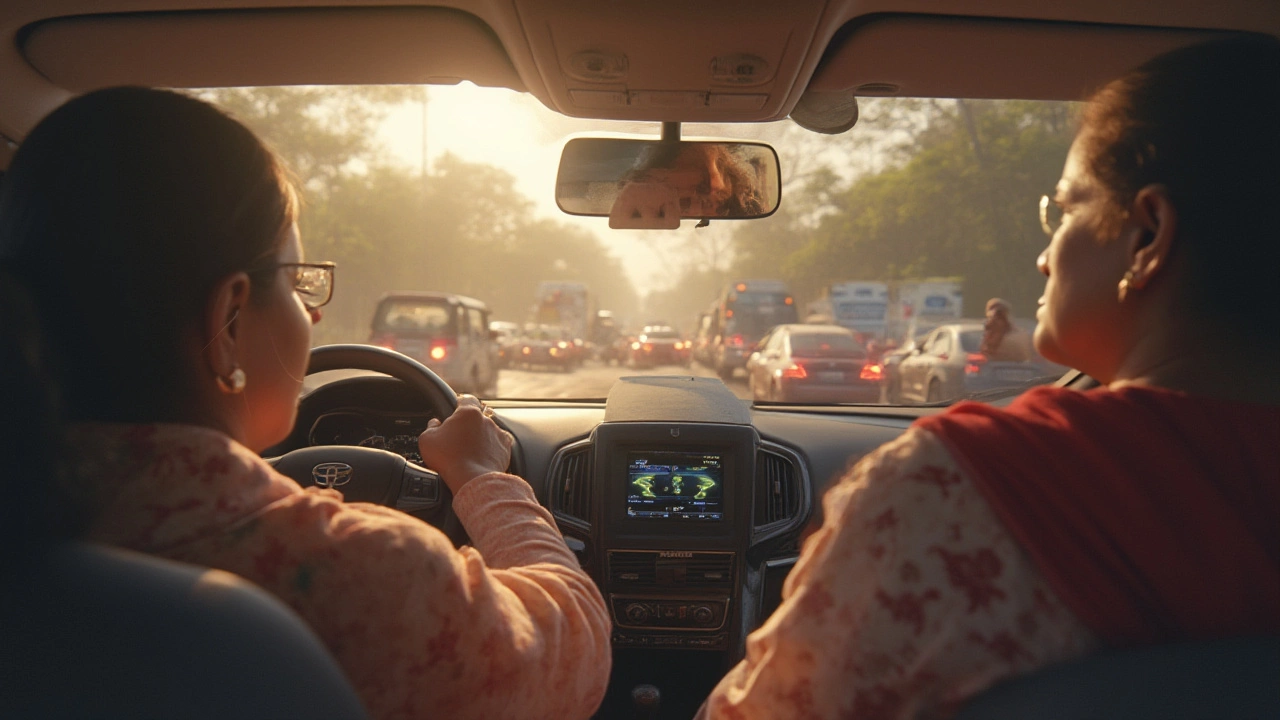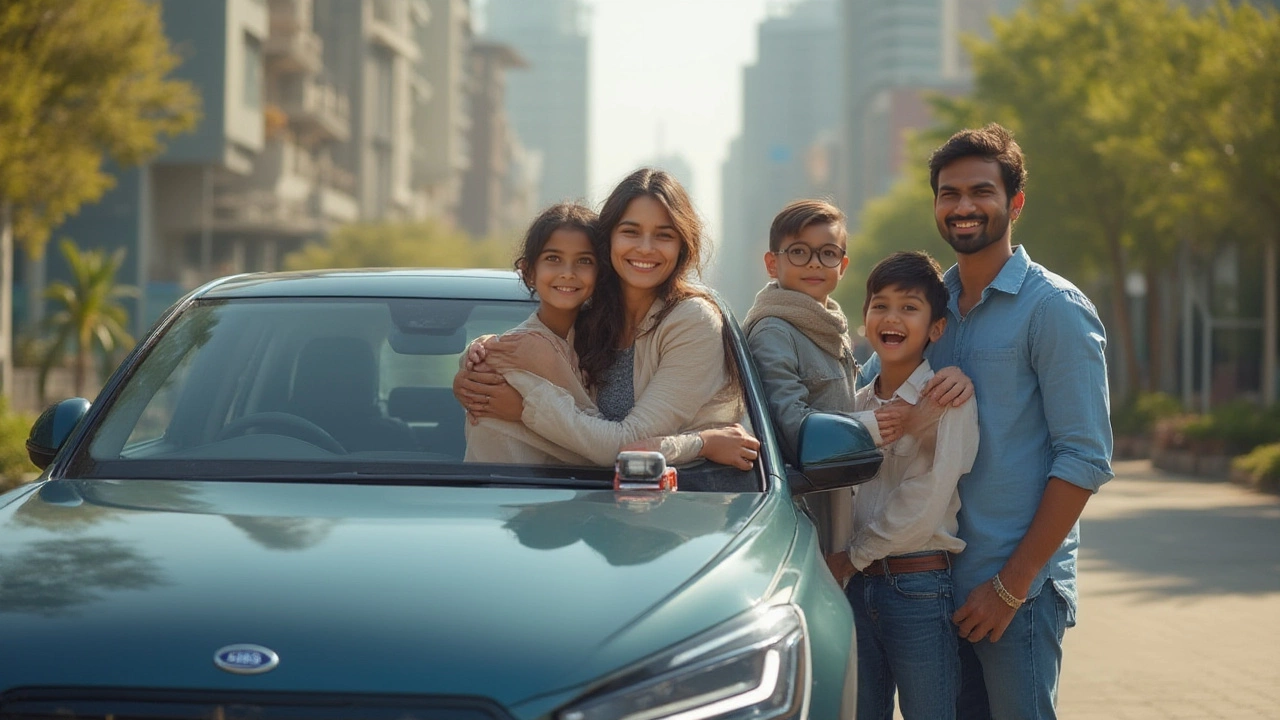Every time a friend picks up their car keys for a family road trip, one hidden thought lingers behind the excitement—how safe is this ride, really? Indian highways have a reputation. With over 150,000 road fatalities in 2024 and climbing, car buyers don’t just glance over airbags and crash reports—they dissect them. So, the race isn’t about horsepower anymore; it’s about steel, tech, and the kind of safety scores that can turn a head-on collision into a story instead of a tragedy.
The Reigning Champion: Which Car Tops India’s Safety Charts in 2025?
In 2025, the name Tata Nexon rings out in every conversation about safe cars in India. This isn’t just hype. It’s backed up by cold, hard numbers and the kind of dramatic crash-test videos that make you appreciate seatbelts. The Nexon snagged a full 5-star rating from Global NCAP, the gold standard for car safety standards. Their rigorous tests mimic head-on collisions and side impacts, and Nexon not only survived but passed with flying colors. Every time you see one weave through city chaos or brave a monsoon-drenched highway, remember: beneath that stylish skin, it's brimming with high-strength steel, clever crumple zones, and an obsession with keeping the people inside alive and well.
What makes the Tata Nexon stand out isn't just the rating. This car comes standard with six airbags, electronic stability control, ISOFIX child seat anchors, ABS with EBD, and a structure reinforced specifically to protect passengers. What’s even more interesting is that Tata upped their safety game after Indian buyers started taking these ratings seriously. Back in 2018, Indian automakers often ignored crash test data, brushing off low scores. Not anymore. Now, when Nexon owners boast about their car, they start with, “Five stars, Global NCAP. Look it up.”
But the Nexon does more than pass crash tests. Tata ploughed millions into R&D to boost side-impact protection, prevent roof collapse, and ensure the front end absorbs maximum energy in a head-on collision. Even seatbelt reminders are aggressive, bugging you until you buckle up. Rural buyers, city commuters, first-time drivers—all find themselves drawn to this blend of price, safety, and rugged reliability.
If you’re eyeing the electric space, Tata Nexon EV variants carry over most of this safety DNA, making them a rare breed: eco-friendly and family-safe. Meanwhile, its rivals, like Mahindra XUV300 and Volkswagen Virtus, also feature robust safety scores, but Nexon's package and reputation keep it ahead. If you want proof, watch any crash test comparison video—Nexon's cabin stays intact, doors still open post-crash, and the dummies emerge “alive.”
How Crash Test Ratings Changed Indian Car Buying Habits
Ten years ago, most of us bought cars for mileage and low maintenance. Safety? You hoped for the best and drove carefully. But Global NCAP stormed in, set up labs, ran brutal crash tests, and beamed the carnage onto YouTube in high definition. Suddenly, parents and young professionals started asking, “Does this car have airbags even for the back seat?” Dealers found themselves googling safety scores mid-conversation.
The needle moved for good in 2022, when Indian authorities started pressuring car companies for better minimum safety standards. A lot of popular models—once kings of the road—got exposed with abysmally low ratings. Manufacturers backpedaled, customers rebelled. It was a wake-up call that turned dull spec sheets into battlegrounds for safety tech: seatbelt pre-tensioners, advanced ABS, big-screen collision warning systems.
As safety became a selling point, manufacturers scrambled to hit higher scores. Tata and Mahindra played it smart, investing early in improved crashworthiness, launching cars like Tata Nexon and Mahindra XUV300 that aced tests and instantly reclaimed trust. Volkswagens and Hondas followed, squeezing more airbags and upright steel into compact frames.
Today, walking into a dealership without checking a car’s Global NCAP score feels like inviting trouble. Social media groups swap crash stories and share “heroes” who survived high-speed wrecks thanks to their car’s rating. Fancy alloy wheels suddenly take a back seat to side-impact ratings and airbag counts.
The effect? Sales went up for the safety-first brands, while some models so tanked in crash tests that their makers quietly withdrew them, redesigned them, or watched them vanish from bestseller lists. Now, even entry-level hatchbacks and compact SUVs tout two or more airbags as standard, and the trend is spreading fast. If you care about your family's future—or just your own hide—skipping the safety specs isn’t an option anymore.

Digging Deeper: Features That Make a Car “Truly Safe”
So, is a five-star rating enough, or is there more to it? Here’s what the safest cars in India in 2025 actually have under their skin:
- Reinforced Passenger Cell: High-strength steel forms a protective cocoon, capable of resisting crushing forces. In cars like Nexon, that shell holds firm even as outside panels crumple in a smash-up.
- Advanced Airbag Systems: It’s not about numbers alone. Smart airbag deployment uses crash sensors and computer calculations to fire off at the right moment, minimizing injury. The Nexon stands out with six airbags working in tandem.
- Electronic Stability Control (ESC): This tech steps in if you start sliding or skidding out of control—vital on India’s unpredictable, wet, or dusty roads. ESC is becoming a must-have.
- ISOFIX Child Seat Mounts: Tethering a child seat with a regular seatbelt isn’t safe. ISOFIX offers rock-solid anchoring, now compulsory in the safest models.
- Pretensioners and Load Limiters: Not all seatbelts are equal. Good ones tug you tightly in a crash, then relax to reduce chest injuries. Most five-star cars have these as standard, front and rear.
- Anti-Lock Braking System (ABS) with EBD: You don’t skid or spin out while braking hard. ABS feels invisible, but it’s your secret weapon in a panic stop.
- Crumple Zones: Designed to collapse predictably, these help absorb the impact so the force doesn’t slam straight into passengers. This feature is more advanced in five-star cars.
- Speed Sensing Door Locks and Post-Crash Unlock: It might seem basic, but in the chaos after a collision, automatic systems that unlock or lock the right doors can save lives.
- Pedestrian Protection: Good cars are now designed to minimize wounds if you hit a pedestrian. Nexon's hood design, for example, absorbs impact, sparing severe head injuries.
These features make the difference between walking away from a crash and not. When you walk into a dealership, quiz the staff on these. A flashy touchscreen can’t save your life; a reinforced body shell just might.
2025’s Safest Cars in India: A Quick Comparison Table
| Model | Global NCAP Rating | No. of Airbags | Price Range (INR, lakhs) | Key Safety Features |
|---|---|---|---|---|
| Tata Nexon | 5 stars | 6 | 8 - 15 | ESC, ISOFIX, ABS, reinforced steel, seatbelt reminder |
| Mahindra XUV300 | 5 stars | 6 | 9 - 15 | ESP, side/curtain airbags, child seat anchors |
| Volkswagen Virtus | 5 stars | 6 | 11 - 19 | ESC, multi-collision brakes, high-strength chassis |
| Tata Punch | 5 stars | 2 | 6 - 10 | Dual airbags, ABS, solid frame, child lock |
| Skoda Slavia | 5 stars | 6 | 11.5 - 19.5 | ESC, rear parking camera, robust construction |
Notice a pattern? Heavy-duty steel shells, multiple airbags, and electronic aids aren’t just for luxury sedans anymore. You see them even in compact SUVs and mid-range sedans. Price-wise, Tata Nexon hits a sweet spot—affordable and packed with everything you’d want for peace of mind.

Tips for Picking the Safest Car for Your Family
Shopping for your next car and want it to be a fortress on wheels? Here’s the ultimate cheat sheet for 2025’s Indian market:
- Start with Crash Ratings: Always check Global NCAP or Bharat NCAP scores. Aim for four stars or above—five is ideal. Don’t just trust brochures; pull up the official data while you shop.
- Airbag Count Isn’t Everything: Bulk up on side, curtain, and knee airbags. Two front airbags are bare minimum. The more coverage, the better your odds in serious crashes.
- Look for ESC and ABS: These are lifesavers on tricky mountain roads or when road debris comes out of nowhere. If a variant skimps on ESC, walk away.
- Demand Child Safety: If you have little ones, verify ISOFIX mounts and rear door child lock systems. Ask to see a demo.
- Inspect Structural Integrity: Ask dealers about the frame material. Search for YouTube crash test videos; what you see is what you get.
- Test the Seatbelts: Fancy might look nice, but check for pretensioners, adjustable anchors, and visible quality. Kids in the back seat need the same safety as adults up front.
- Prioritize Emergency Support Features: Speed alert systems, automatic crash notification, or post-crash unlocks sound extra, but can be huge in a crisis.
- Check for Recalls or Unreported Defects: Do a quick online search for complaints or recall info for your shortlisted models. Some nice-looking cars have nasty secrets.
- Don’t Go by Looks Alone: People crash in ugly cars and walk away, and sometimes gorgeous rides turn deadly because they’re built light. Substance beats looks.
- City vs Rural: If you drive rough roads or highways, favor sturdier builds with higher ground clearance and additional stability/traction features.
One more pro-tip—don’t let anyone talk you out of safety for a small discount or a free accessory pack. There’s no price tag on staying alive.
Buying a car may feel like an emotional decision or a matter of style, but safety is the ace up your sleeve. Tata Nexon earned its reputation honestly. Spread the word—there’s no glory in taking chances when you can choose the car built to bring you home, no matter what the road throws at you.
